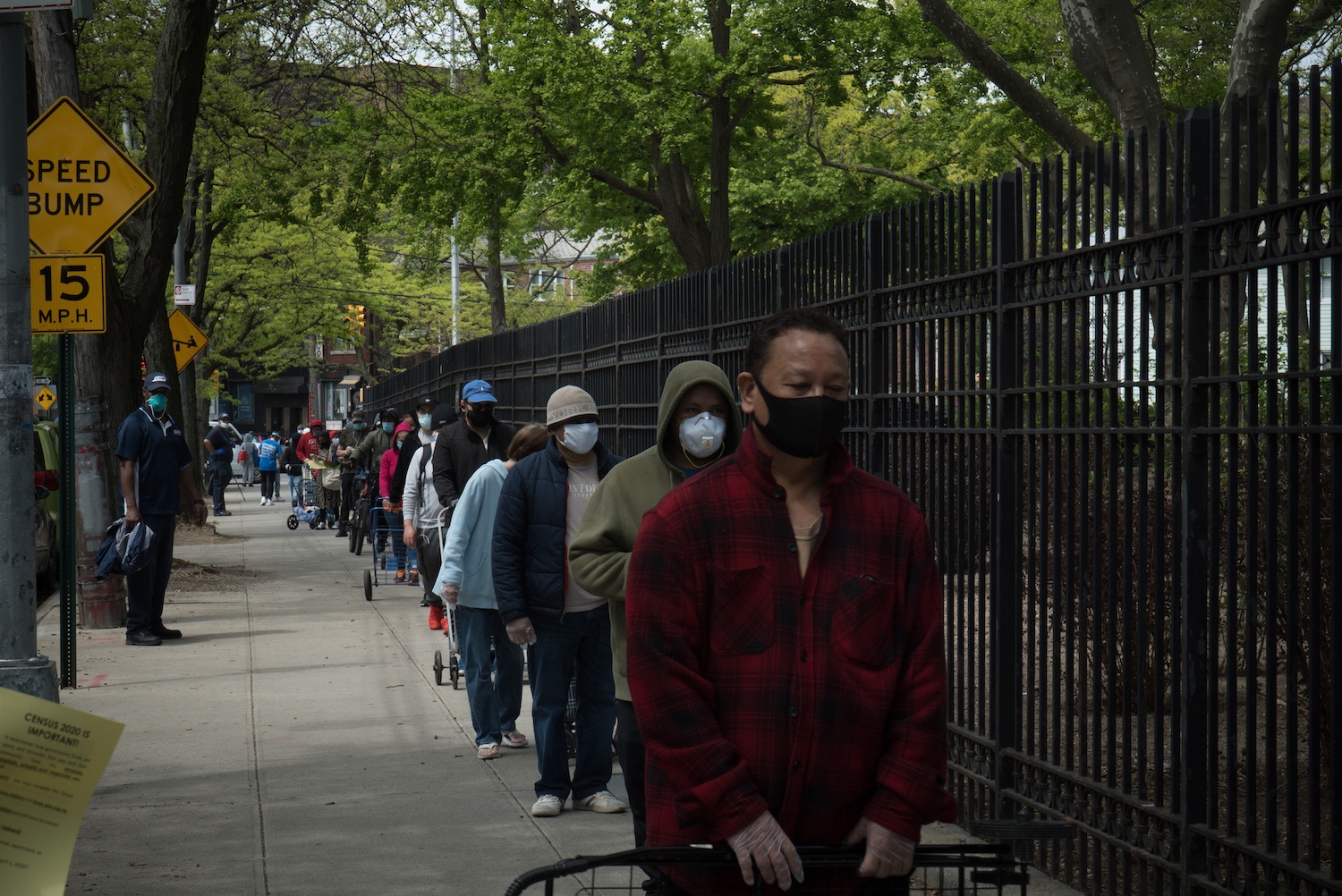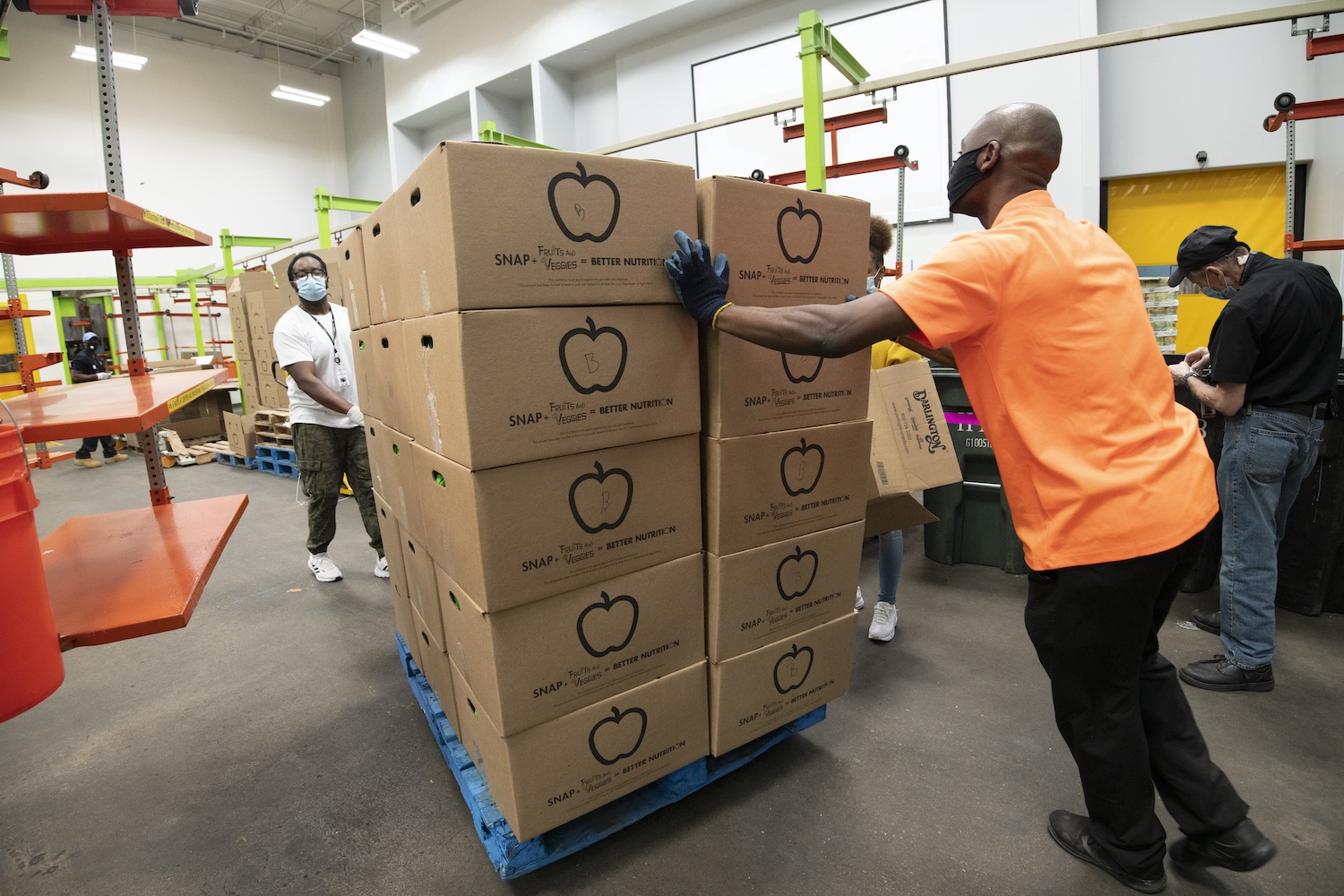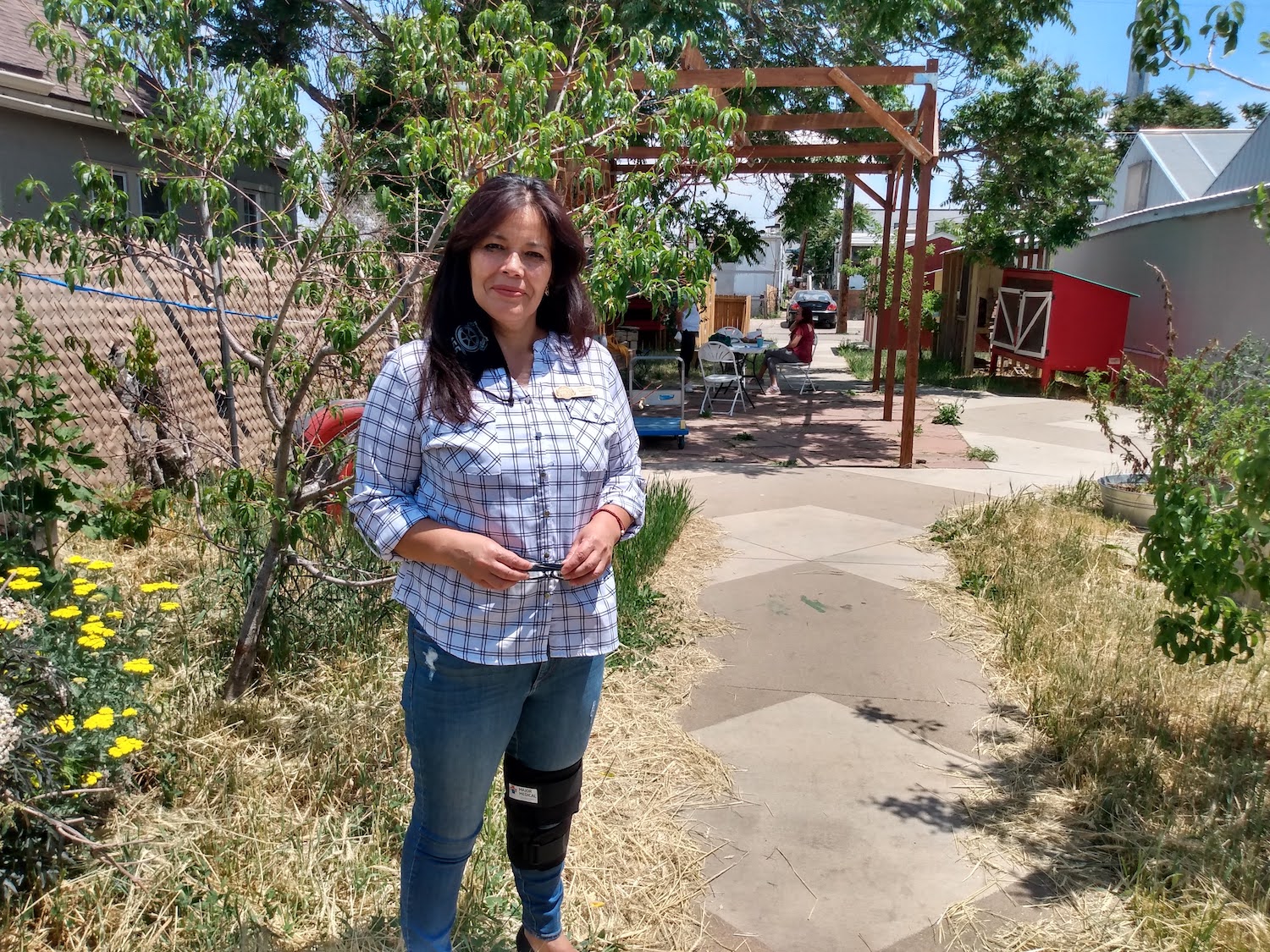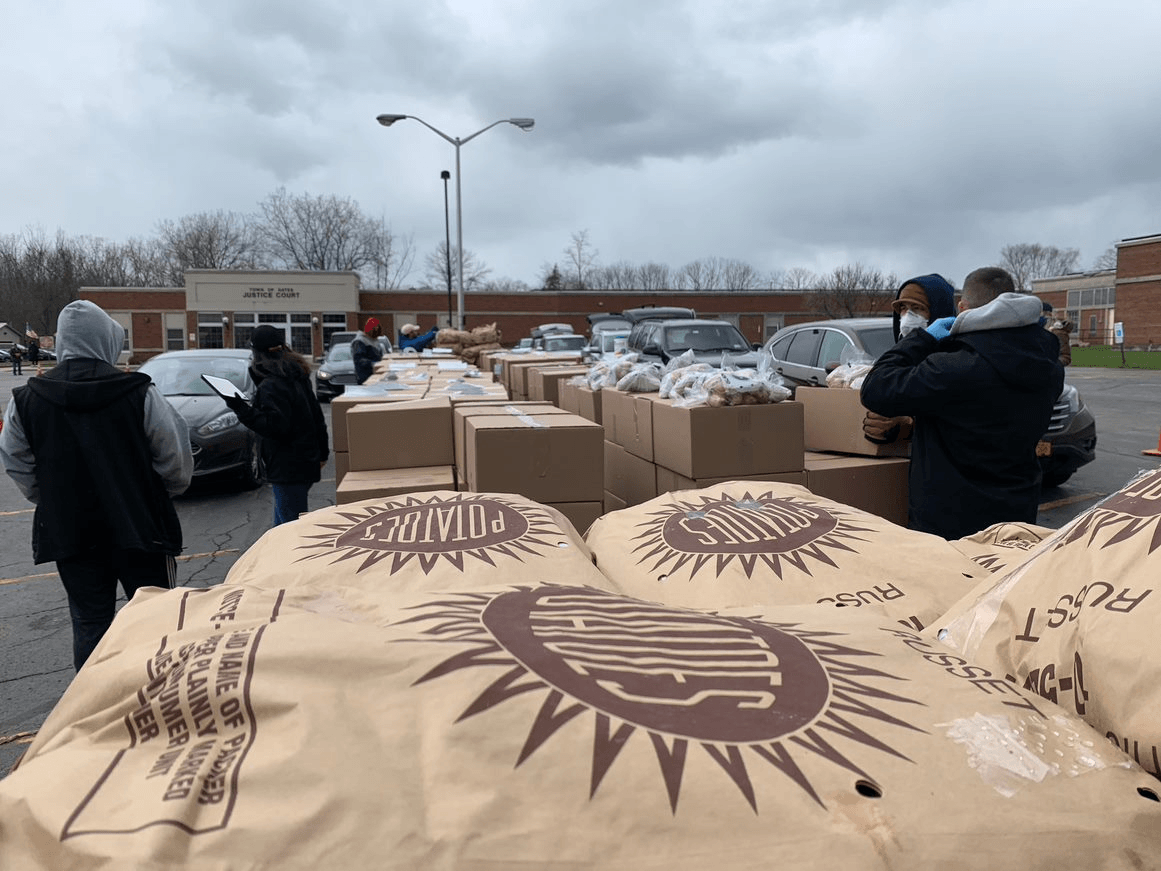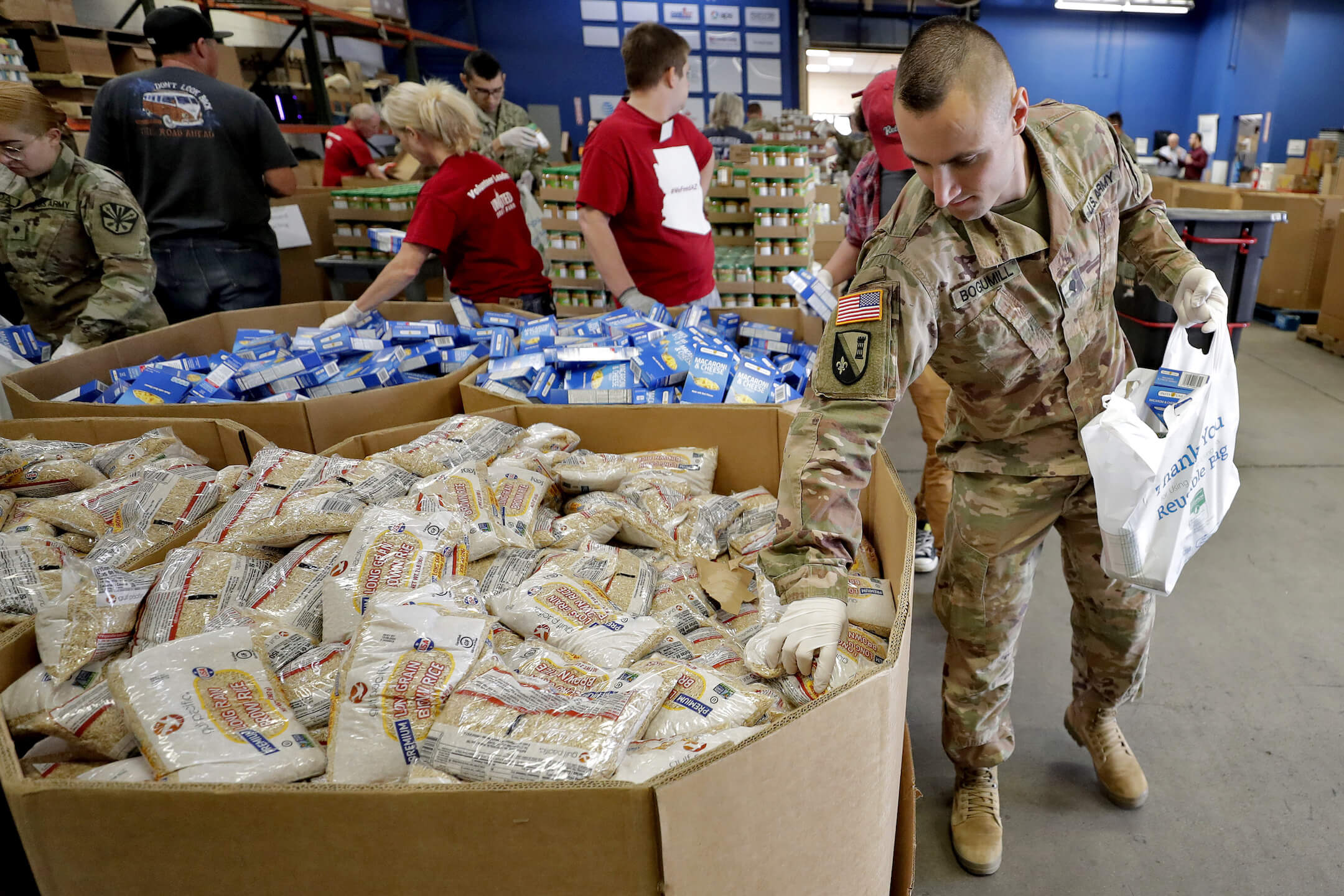New research, reported by Investigate Midwest, shows that longstanding racial divides on food security have grown even starker during the pandemic.
Since the COVID-19 pandemic began, more Americans—and particularly Americans of color—have experienced food insecurity, meaning they have limited or uncertain access to enough food.
This article is republished from The Midwest Center for Investigative Reporting. Read the original article here.
In 2018, about 20 percent of Black households and about 16 percent of Hispanic households were food-insecure, according to the U.S. Department of Agriculture’s food insecurity survey. About 8 percent of white households were.
But the figures have increased since the pandemic.
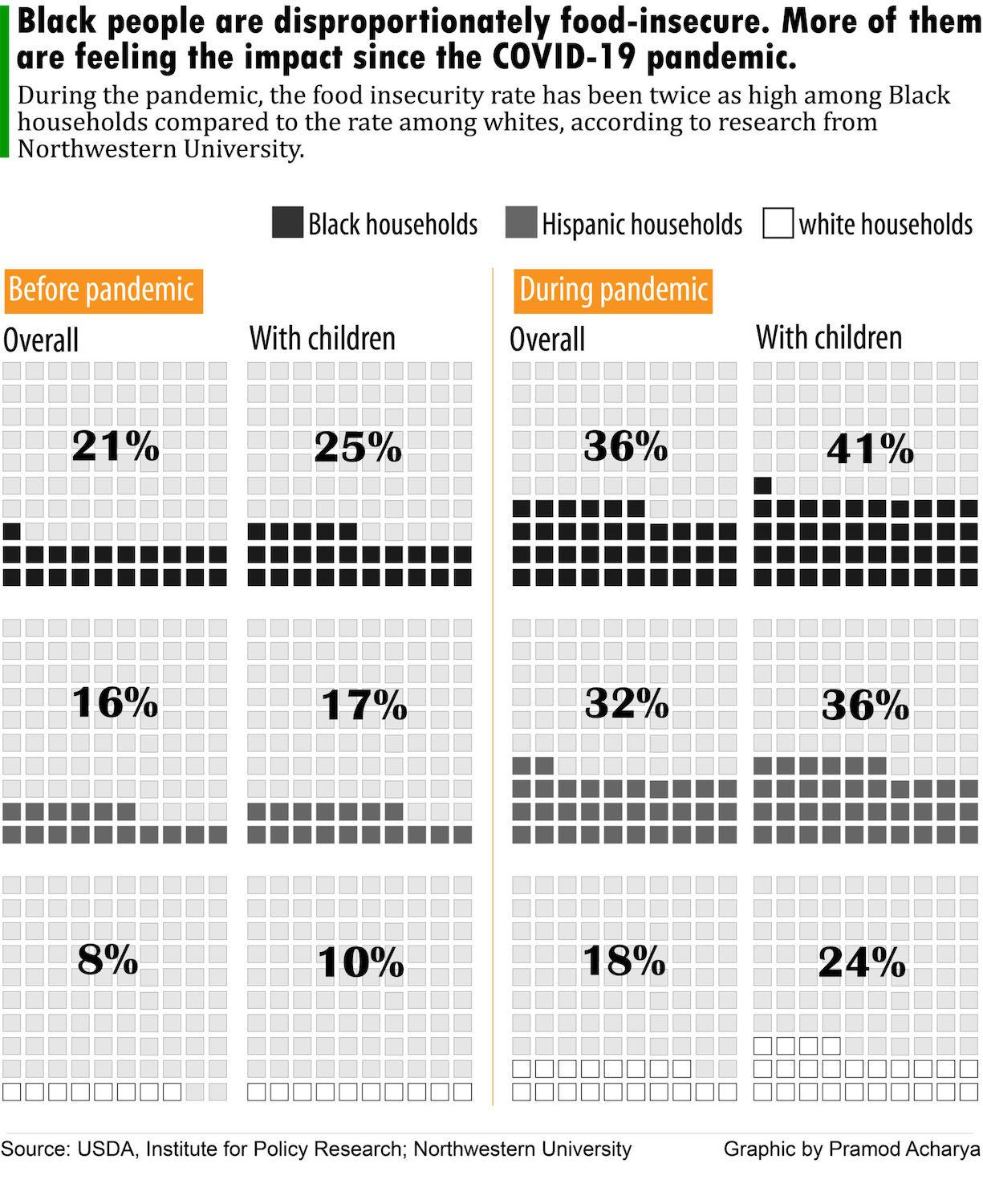
Black and Hispanic households have been disproportionately affected, according to research by the Institute for Policy Research at Northwestern University. The institute relied on a Census survey that was taken between April 23 and May 19.
According to the research, 36 percent of Black households and 32 percent of Hispanic households said they were food-insecure during that time period. That’s compared to 18 percent of white households.
Several reasons may explain the increase. The surge in the unemployment rate, loss of subsidized meals because schools closed, delays in relief payments and increased food prices could account for the increases, according to the institute’s research paper.
Households with children were even more affected. According to the institute’s research, 41 percent of Black households with children and 36 percent of Hispanic households with children struggled with food insecurity.
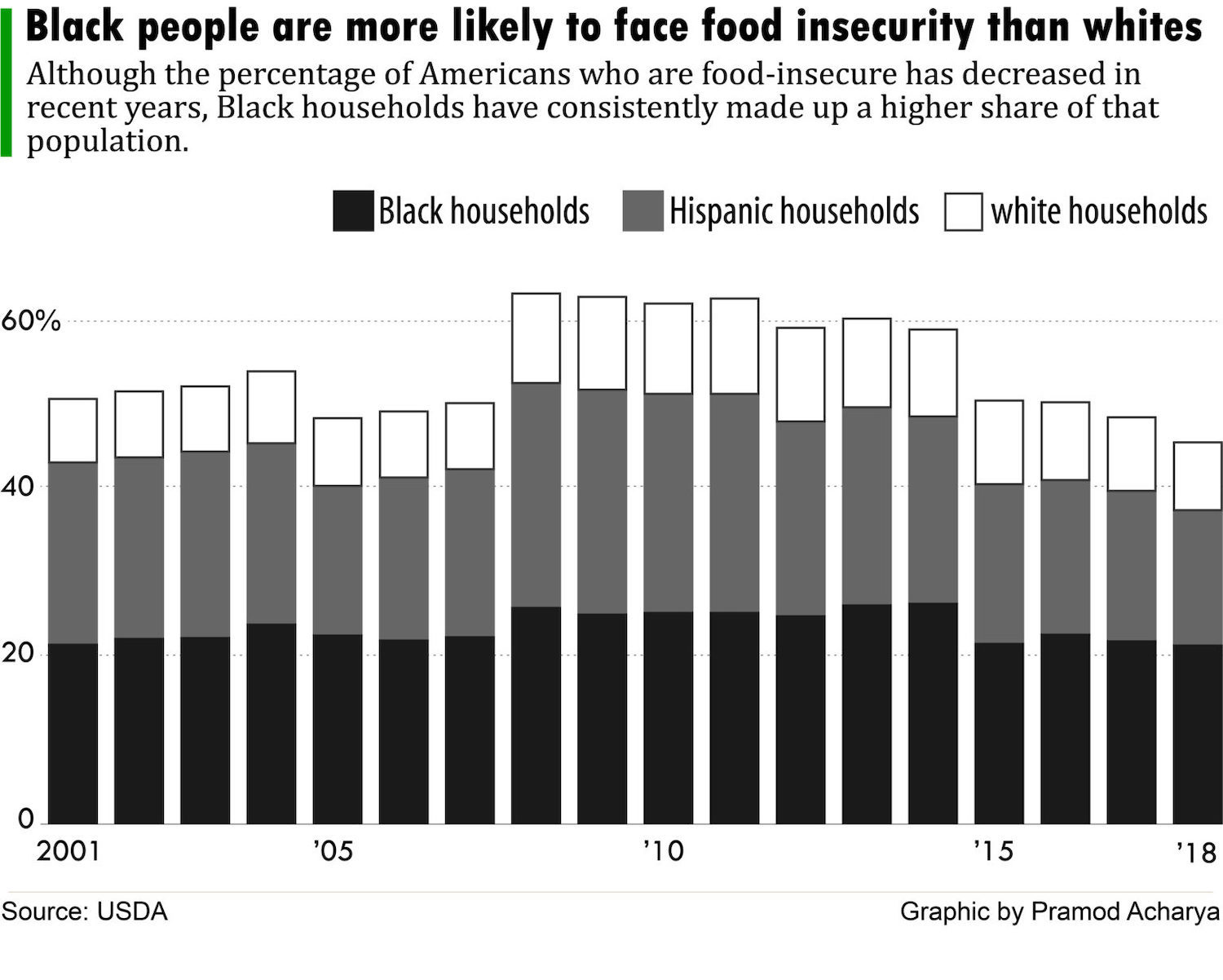
The racial gap in food insecurity has been documented for decades, and it correlates with the difference in wealth between white and minority households.
